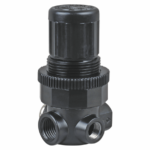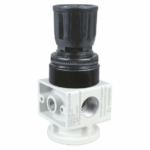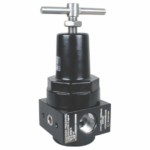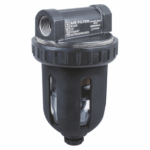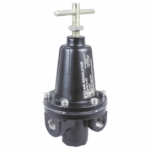Understanding How a Double-Acting Pneumatic Cylinder Works
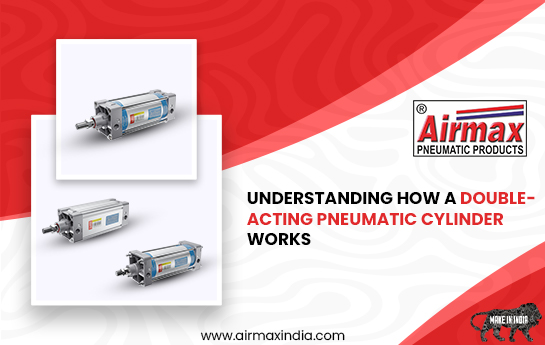
The double-acting pneumatic cylinder is a critical component of industrial automation and technology. These flexible components are utilized in several applications to actuate a wide range of mechanical operations. Understanding how a double-acting pneumatic cylinder works is essential for anyone working in engineering, manufacturing, and automation. This article will examine the ideas, functions, and applications of double-acting pneumatic cylinders, providing a comprehensive grasp of their operation and usefulness.
What is a Double-Acting Pneumatic Cylinder?
A double acting pneumatic cylinder is a mechanical device that uses compressed air to create linear motion in two directions. Unlike single-acting cylinders, which can only move in one direction and must be returned to their original position with a spring or external force, double-acting cylinders may expand and retract by delivering air pressure to both sides of the piston. This bidirectional capability expands their versatility and applicability for applications requiring precise control and continuous movement.
Double-Acting Cylinder Principle:
A double-acting pneumatic cylinder uses compressed air to drive a piston within the cylinder bore. The cylinder has two ports: one for air to enter and push the piston out (extension stroke), and another for air to enter and push the piston back in (retraction stroke). Controlling the flow of air into these openings allows the cylinder to move back and forth in an orderly way.
Rest Position:
In the rest position, both ports of the double-acting cylinder are closed, and the piston is stationary. This is the cylinder’s neutral condition, which means that no force is applied to move the piston in either direction. The cylinder is ready to function when compressed air enters one of the ports.
Extension Stroke:
Pressurized air is injected through the port on the cylinder’s cap during the extension stroke. This air pressure forces the piston rod outward, causing the cylinder to lengthen. The force created by this stroke may be employed for various mechanical operations, including lifting, pushing, and moving items. The speed and force of the extension may be regulated by adjusting the air pressure and flow rate.
Mid-Stroke:
The mid-stroke phase occurs when the piston is midway between completely extended and retracted. During this stage, the cylinder may be precisely controlled to stop at any point along its stroke. This capacity is critical for applications that need precise placement, such as automation systems in which components must be positioned in certain positions.
Retraction Stroke:
The retraction stroke begins when pressurized air enters the port on the rod end of the cylinder. The air pressure forces the piston rod back into the cylinder, causing it to retract. Similar to the extension stroke, the speed and force of retraction may be regulated by adjusting air pressure and flow rate. The retraction stroke is used to restore the cylinder to its original position or to accomplish activities involving pulling or retracting motion.
End Stroke:
In the end stroke position, the piston has completed its travel and is either completely extended or fully retracted. At this moment, the cylinder stops moving, and the air pressure is usually released or maintained to keep the position. End stroke sensors or switches are frequently employed to determine when the piston has reached its maximum capacity, allowing for precise control and automation of the cylinder’s movement.
Control and Regulation:
The proper operation of a double-acting pneumatic cylinder requires effective control and regulation. This is accomplished through a variety of components and tactics, including:
- Solenoid valves: control the flow of pressured air into cylinder ports, enabling automated operation.
- Flow Control Valves: Flow Control Valves: Change the rate of airflow to control the cylinder’s speed.
- Pressure regulators: Ensure that the cylinder receives consistent air pressure, resulting in uniform force and motion.
- Sensors and switches: Detect the piston’s position and offer feedback for accurate control.
Double-Acting Cylinder Function:
Bi-Directional Actuation:
A double-acting pneumatic cylinder’s principal function is bidirectional actuation. This feature enables the cylinder to move weights in both directions, making it ideal for a variety of applications that need continuous and repeated motion.
Conversion of Fluid Energy to Mechanical Motion:
Double-acting cylinders convert the energy of compressed air into mechanical movement. This conversion process involves the piston moving linearly within the cylinder bore, transforming the energy of compressed air into a productive effort. This rapid energy conversion is a significant benefit of pneumatic cylinders, which provide consistent and forceful actuation.
Precise Positioning:
Double-acting pneumatic cylinders excel at precise positioning, making them stand out. The air pressure and flow rate may be set to stop the cylinder at any point along its stroke. This accuracy is critical for applications in manufacturing and automation, where components must be precisely put and aligned.
Force Generation:
Double-acting cylinders may create immense force, making them ideal for heavy-duty applications. The cylinder’s force is governed by the air pressure and piston surface area. By altering these characteristics, the cylinder may be customized to fulfill the unique force needs of various jobs.
Integration with System:
Double-acting pneumatic cylinders may be effortlessly incorporated into larger systems, operating with other components including valves, sensors, and controllers. This integration enables the development of complicated and highly automated systems capable of completing a wide range of activities with minimum human interaction.
Dynamic Response:
Pneumatic cylinders respond quickly and dynamically to control signals, enabling efficient movement. This responsiveness is particularly useful in applications requiring speed and agility, such as robots and automated manufacturing lines.
Controlled Movement:
Controlled movement is a key characteristic of double-acting pneumatic cylinders. The cylinder’s motion may be controlled smoothly and precisely by carefully changing the air pressure and flow. This regulated movement is critical for applications that need smooth functioning, such as medical equipment and precise manufacturing.
Double-Acting Cylinder Application:
Manufacturing and Automation:
In manufacturing and automation, double-acting pneumatic cylinders move, position, and manipulate components and products. They are crucial components of automated assembly lines, where they perform precise and repetitive tasks including lifting, pressing, and clamping.
Machinery and Equipment:
Double-acting cylinders are frequently employed in a variety of machines and equipment. They offer the essential actuation for operations like opening and shutting gates, moving machine components, and using levers and controls.
Construction and Earthmoving Equipment:
Double-acting pneumatic cylinders are used in construction and earthmoving equipment such as excavators, loaders, and bulldozers. They offer the strong and dependable actuation required to move big weights and complete difficult jobs.
Agricultural Machinery:
Agricultural machinery, such as tractors and harvesters, commonly employ double-acting pneumatic cylinders to elevate tools, adjust plow positions, and control planting equipment. Their durable construction and consistent performance make them ideal for the harsh conditions of agricultural labor.
Aerospace Industry:
Double-acting pneumatic cylinders are used in the aviation industry for several applications, including landing gear operation, cargo door activation, and flight control surfaces. Their ability to provide precise and constant movement is critical in the complex area of aeronautical engineering.
Automotive Manufacturing:
Double-acting pneumatic cylinders are widely used in automotive assembly lines, welding systems, and robotic arms. They make it simpler to move parts and equipment accurately and effectively, allowing the car industry to maintain high production and quality standards.
Material Pressing and Handling:
Double-acting cylinders are useful in material pressing and handling applications. They offer the force and control required for operations such as pressing, stamping, and manipulating materials in industrial processes.
Medical Equipment:
Double-acting pneumatic cylinders are widely employed in medical equipment, including patient lifts, hospital beds, and surgery tables. Their smooth and precise movements provide patient safety and comfort, as well as the accuracy of medical procedures.
Conclusion:
Double-acting pneumatic cylinders are crucial components in modern industrial and manufacturing systems. Their ability to provide precise, bidirectional motion, a durable structure, and consistent performance make them suitable for various applications.
Double-acting cylinders are critical for improving efficiency, productivity, and precision in various sectors, including manufacturing, automation, construction, and healthcare. Understanding how these cylinders work and their many applications may help engineers and technicians maximize their utilization in various industries, resulting in improved performance and inventiveness.

